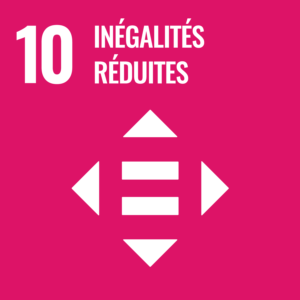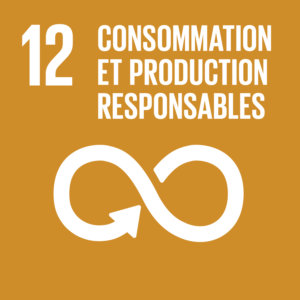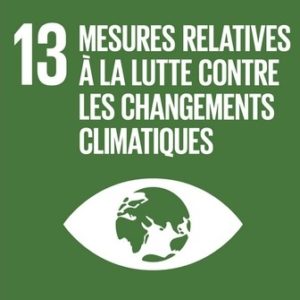
The Climate Dividends initiative aims to accelerate the ecological transition by measuring the positive impact of companies in terms of tons of CO2 eq avoided. It operates by distributing a Climate Dividend to shareholders for each ton of CO2e avoided or sequestered by the company, measured by avoided emissions outside of its activity perimeter.
Via ID is committed to this approach in order to highlight activities and services of sustainable mobility aligned with the Sustainable Development Goals. Climate Dividends represent a crucial tool for directing investments towards projects contributing to global carbon neutrality, with Fifteen serving as a concrete example of the application of this approach in the field of shared bicycle services.
What are Climate Dividends?
Climate Dividends are an initiative led by the Climate Dividends Association, founded by ADEME, Time for the Planet, Sweep, Moriva, Kanopee Partage, and 2050. Its goal: to accelerate the financing of the ecological transition. A Climate Dividend is a non-financial indicator representing the positive climate impact generated by a company, measured in tons of CO2 eq avoided.
1 ton of CO2e avoided or sequestered by the company = 1 Climate Dividend distributed to shareholders.
Just like financial dividends, a shareholder can claim climate dividends, allowing them to measure and demonstrate their commitment to the decarbonization of our society and the contribution of their portfolio companies to global carbon neutrality.
According to ADEME, avoided emissions correspond to “emission reductions made by the activities, products, or services of an organization outside its scope of activity”. It is an estimate of the positive effect of a solution on greenhouse gas emissions compared to a baseline scenario, also called “Scope 4”.
For example, if a company sells electric bicycles, we compare the impact of this solution to a reference situation, namely the situation that would occur without the company’s solution. For an electrically assisted bicycle used by an individual to go to work, do their shopping or any other daily journey, we compare the impact of the manufacture and use of this bicycle in relation to a reference scenario, in which mobility options the customer used before purchasing their bike. The difference between the impact of these two situations corresponds to the emissions avoided if the proposed solution is less carbon-intensive than the situation without the solution.
According to Decathlon’s study to establish its avoided emissions linked to soft mobility, people who have purchased an electric bike declare having replaced part of their car journeys with bicycle journeys to the tune of 1,461 km per year. This gives a CO2 avoidance factor of 2.9 tCO2e for any purchase of a new VAE over its entire life cycle.
Why is Via ID committing to this approach?
As an impact investment fund, Via ID’s mission is to develop new activities and services for sustainable mobility. Via ID’s impact strategy was developed around the Sustainable Development Goals (SDGs):

SDG 3: Good health and well-being.

SDG 10: Reduced inequalities.

SDG 12: Responsible consumption.

SDG 13: Climate action.
Climate Dividends are the trusted framework the financial world needs to steer its investments towards projects that contribute the most to climate change challenges. That’s why we have supported the association since its launch in 2022.
Climate Dividends will direct capital towards profitable and impactful models. It is a major initiative co-constructed with key sector players including ADEME, based on a complex and robust protocol. Via ID is proud to support the association from the start and that Fifteen is participating in this 2nd cohort.
It’s very valuable to be able to count on the support of an investor to experiment with the approach with companies in their portfolio and to improve the process of generating/distributing Climate Dividends to make it easier to use for everyone and the most impactful. That’s why we are very pleased to have Via ID’s support from the beginning and that we are delighted that Fifteen is participating in this 2nd cohort.
How do Climate Dividends work? Example of Fifteen, a pioneering startup in the field
Fifteen, a startup offering shared bicycle services, joined the second cohort of pioneers wanting to have their climate dividends recognized.
Fifteen will rely on data from the Public Bicycle Report, which helps to better understand the ecological impacts of public bicycle services, as well as on studies conducted by Decathlon to assess the avoided emissions of its services. Participation in this project involves following a strict protocol established by the association and then evaluated by a third-party auditor. The obtained climate dividends are then redistributed to the company’s shareholders.
Climate Dividends make a lot of sense for Fifteen: thanks to the usage data of French bike services, we can establish the modal shift from car to bike. It was therefore natural to join this second cohort to have our CO2 emissions avoided recognized by a third party. This will be an asset for our investors but also for our clients, the territories that deploy public bike services…
The avoided emissions tool encourages the adoption of a more audacious climate strategy, which extends beyond the limits established by Via ID. However, this approach is complex and relies on specific assumptions to the reference scenario, which can lead to different interpretations. It is essential that Via ID primarily focuses on reducing its direct and indirect emissions while honoring its commitments to carbon neutrality

